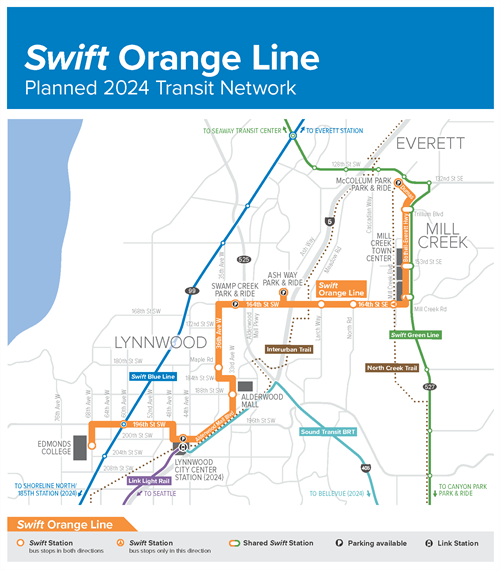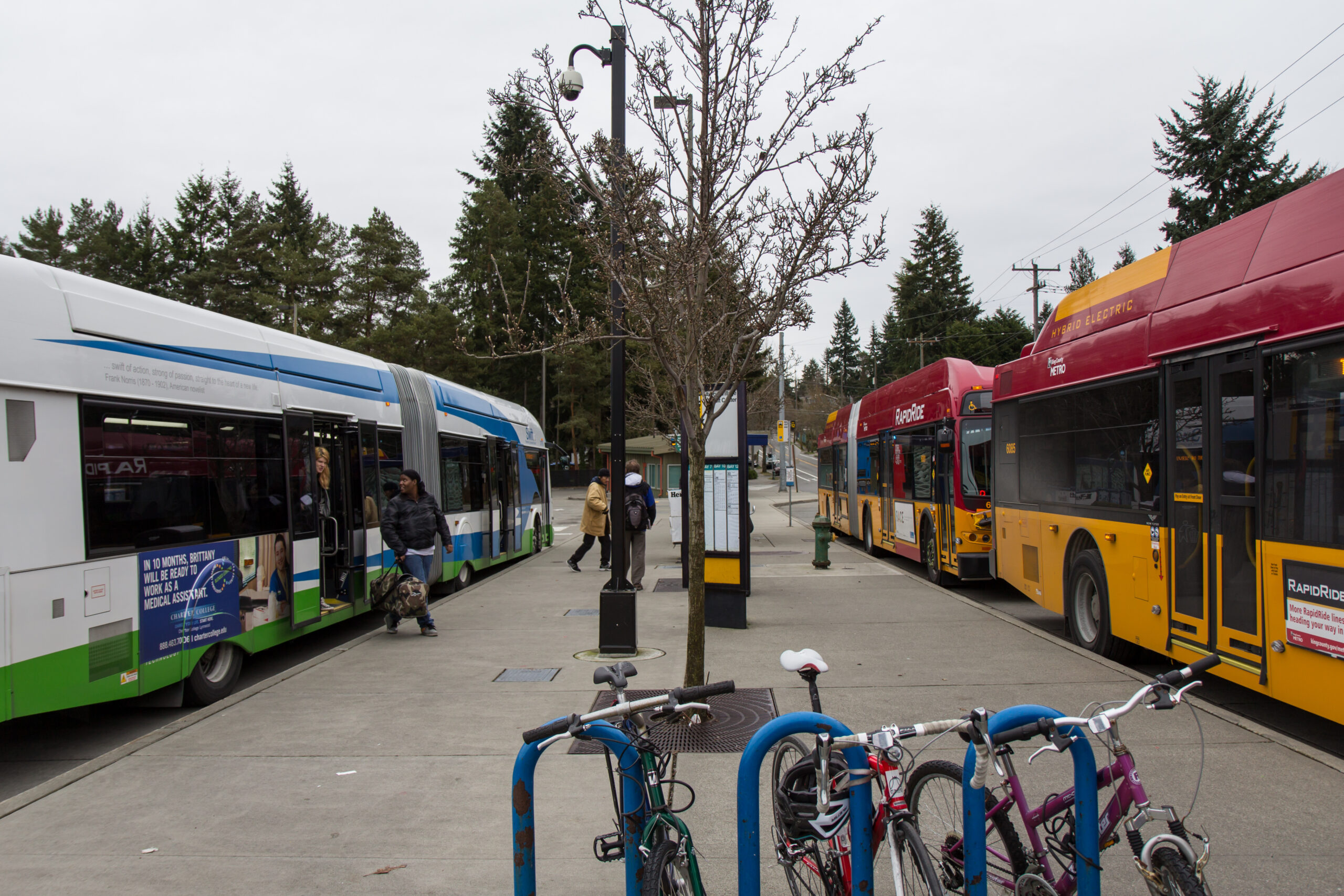On Monday, the Federal Transit Administration (FTA) announced it has approved four new grants for Bus Rapid Transit (BRT) projects totalling $187 million.
Over half of the new grant dollars from the Biden Administration will be flowing straight to Western Washington for two projects: the Madison Valley RapidRide line in Seattle, and the Swift Orange Line in southwest Snohomish County.
The Seattle project will receive $59.9 million in FTA Capital Investment Grants as part of its Small Starts program. The Orange Line will receive $37 million.

A joint press release from Washington’s United States Senators, Patty Murray and Maria Cantwell, delivered the welcome news:
“My office has been working closely with the Federal Transit Administration and local transit partners to secure these funds and I’m pleased to see those efforts come to fruition,” said Senator Murray. “These resources will reduce congestion, create jobs, and build more equitable communities. Securing federal dollars to help us invest in public transit across Washington state will continue to be a top priority for me this Congress.”
Senator Cantwell said: “The Madison bus rapid transit line in Seattle will provide frequent service along one of the city’s busiest transit corridors, with departures every six minutes at peak hours and connections to Sound Transit light rail and Washington State Ferries. And Community Transit’s Swift Orange Line will improve bus travel times by 25% while connecting Edmonds, Lynnwood and Mill Creek commuters with Sound Transit’s new light rail expansion.”
The release of federal funds should allow construction on the RapidRide G Line in the Madison Valley to begin this year.
With 15,000–18,000 daily riders expected, the 2.3‑mile long G Line is short but mighty. It will connect to the ferries at Colman Dock, the Seattle Streetcar, the 3rd Avenue bus corridor, and Link light rail.
The Seattle Department of Transportation has a detailed synopsis of the project here.

Approximately 45% of the project’s total cost will be covered by this grant. The rest of the project will be covered by levy funds and Sound Transit.
Issues with vehicle procurement, funding uncertainties from the previous federal administration, and administration issues have delayed the project since it was approved by voters in 2015, as part of the Move Seattle levy.
But with new hybrid diesel-electric buses secured, staffing issues resolved, and funding now secure, the project is ready to execute the grant and seek bids from contractors. If no further delays emerge, the G Line should begin service in 2024.
Further north in Snohomish County, $37 million has been set aside for the county’s third Swift bus rapid transit line.

The Orange Line will serve Edmonds College, Alderwood Mall, and Mill Creek Town Center, as well as major Park & Rides in the area.
At Lynnwood City Center, it will also connect to Link light rail, feeding commuters onto high-capacity rail transit south towards King County.
Bus rapid transit is a popular mode of mass transit all over the world.
By designating lanes, entire roadways, and stations exclusively for buses, BRT can reduce travel times for large numbers of travelers on core routes.
BRT is not a substitute for a rail spine, but it does nicely complement a system like Link. In fact, Sound Transit has its own bus rapid transit system in development, called Stride, which will operate along the I‑405 corridor.
King County already has six RapidRide lines in service. Six more are planned to open in the next five years, including the G Line.
Community Transit’s Swift lines already connect Everett to Shoreline and Bothell.
Clark County will start bus rapid transit construction in Mill Plain this year.
And Pierce Transit is studying a BRT alignment that could open in 2024.
Washington State has long been well positioned to secure federal dollars for infrastructure projects thanks to the influence of its congressional delegation.
Washington’s senior United States Patty Murray is an influential member of the Appropriations Committee, and her office played a significant role in bringing these federal dollars to Washington.
Washington’s junior United States Senator Maria Cantwell, meanwhile, is the new Chair of the Senate’s Committee on Commerce, Science, and Transportation.
The senators have worked together to advance many transit-related initiatives, including a bill that would expand federal grants for projects near completion, such as Sound Transit’s Federal Way and Lynnwood Link extensions.

